Advertisement
Universal Pictures, 'Frankenstein,' And Basketball: The Story Of The First U.S. Olympic Team
Resume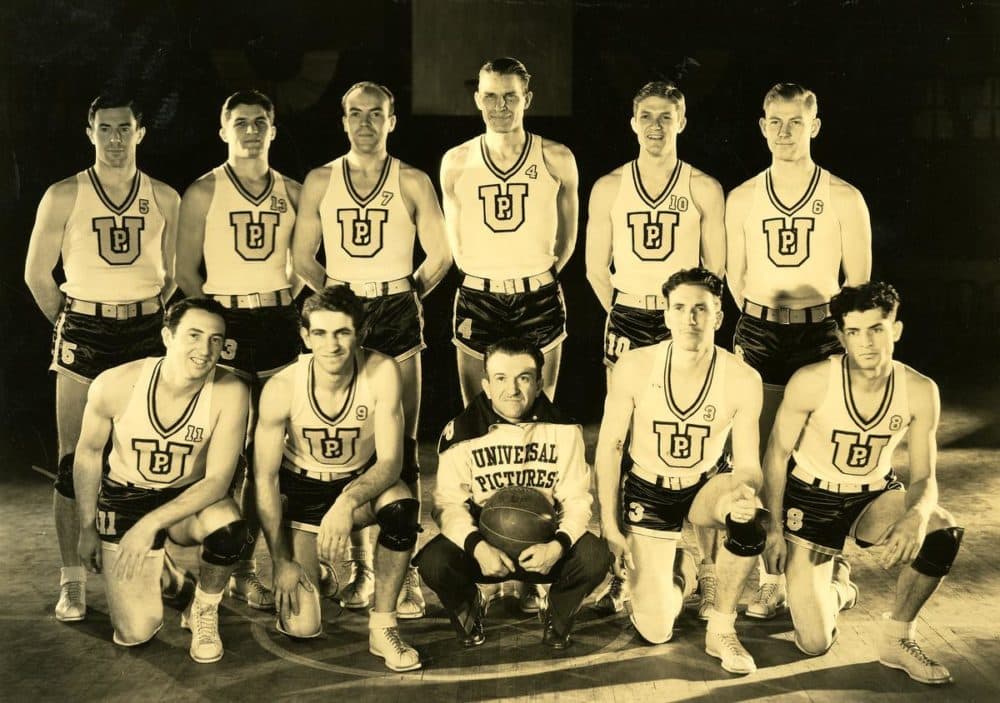
This story was re-broadcast on September 12, 2020 as part of The Best Of Only A Game.
This summer, at the 2020 Tokyo Olympics, the United States will go for a fourth straight gold medal in men’s basketball.
Team USA's roster hasn't yet been set, but one thing's for sure: every player on Team USA will be employed by a professional basketball team.
But back in 1936 — the first year that the Olympics featured basketball — the players representing Team USA were amateurs who played for company teams.
In fact, half of that 1936 U.S. Olympic basketball team worked at an oil refinery about 50 miles from Wichita, Kansas. The other half came from Universal Pictures.
Yes, the same Universal Pictures that brought us such timeless classics as "E.T.," "Back to the Future," and all nine "Fast & Furious" films also gave Team USA half its basketball roster for the 1936 Games.
And how this happened — how a bunch of guys who worked as stage hands and promoters for a movie studio ended up representing the U.S. at the Nazi Games in Berlin — starts with a Jewish immigrant from Germany who played a leading role in creating Hollywood as we know it today.
Universal Pictures ... And Basketball
Carl Laemmle was just 17 in 1884 when he left Germany for the United States. He settled in the Midwest.
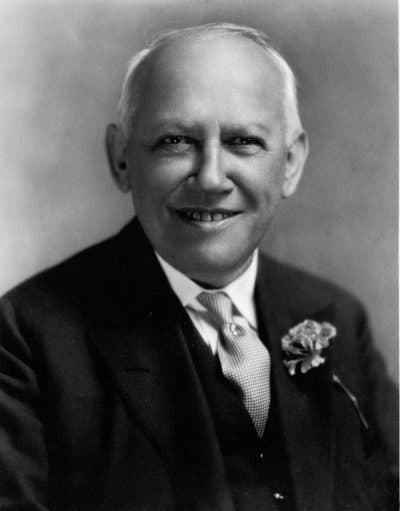
"[He] had a variety of jobs," says Andrew Maraniss, author of "Games of Deception," "but on one trip to Chicago, he saw a long line of people standing outside of a nickelodeon theater, and he said that there might be some money to be made in this fledgling film business. He started his own nickelodeon in Chicago, and then pretty quickly realized that the real money was to be made in actually creating and distributing the movies.
"He saw a truck driving down the street with the brand of 'Universal Pipe Fitters,' and that's where this name of 'Universal' came from."
"Then if you go into August of 1912, that's when Universal started leasing land out here in Southern California to film a lot of Westerns," says Jeff Pirtle, director of archives and collections for NBC Universal.
Pirtle says that, in those early days, Carl Laemmle’s Universal Pictures set itself apart from other studios with its low-budget Westerns and comedies that targeted rural markets.
And the studio turned a 230 acre plot of land in the San Fernando Valley into Universal City.
"This fantasy land where people could go walk down a New York street or walk down a Western street," Pirtle says. "I’ve got this great photograph from 1923, and you can see the lower of half the Notre Dame cathedral that's on the backlot. You can also see a set of Monte Carlo."
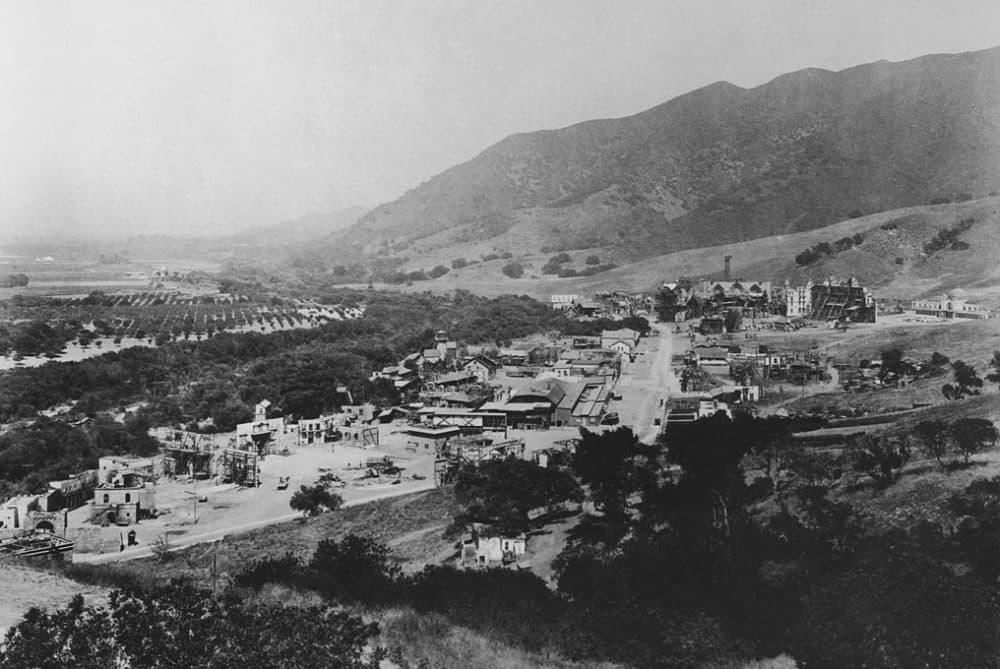
Author Andrew Maraniss says Carl Laemmle brought family members from Germany to live and work at the studio.
"This elaborate town where 300-something people lived," Maraniss says. "Native Americans lived there, and they were extras in the Western movies that the studio was making at the time. He was the first person to really sort of open up the studio to tourists. So you would have people arriving on bus and sitting in bleachers, watching these movies being made."
"And they were encouraged to cheer the heroes of the films and to boo the villains because this was all in the silent era," Pirtle says.
So how does basketball enter the picture?
"So, in the early 1930s, of course, some of the great films that were being produced at Universal were our classic monster films," Pirtle says.
"Dracula" and "Frankenstein" came out in 1931. "The Mummy" came out in 1932. "The Invisible Man" was 1933.
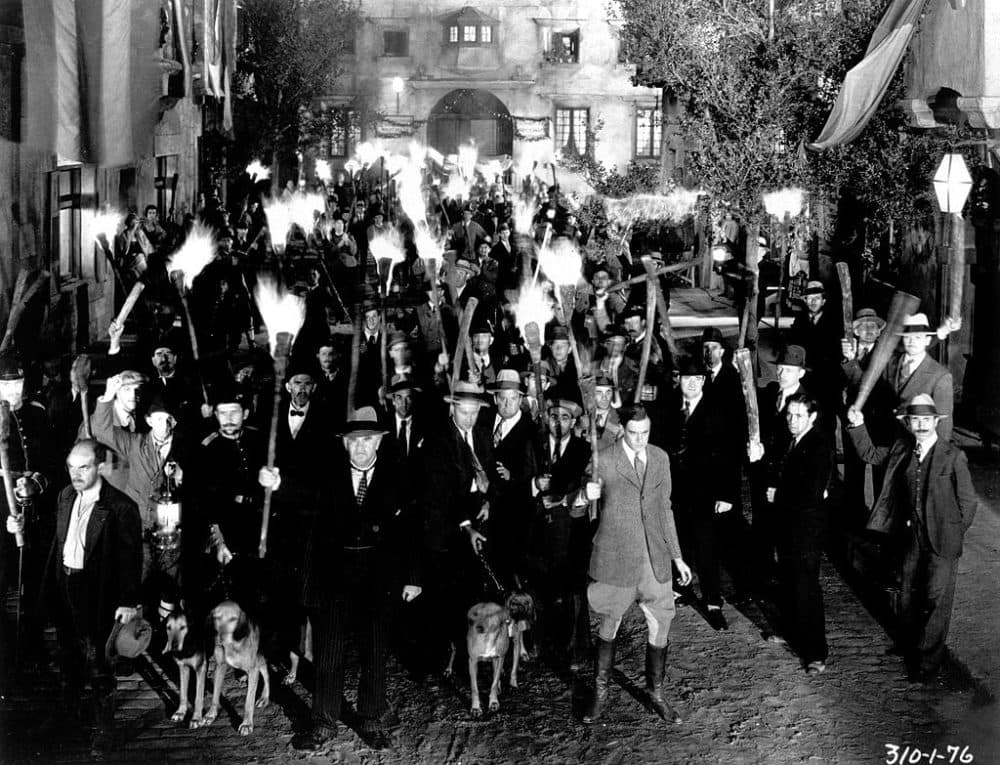
"So at that time, Universal had a really tight-knit group of employees," Pirtle says. "And there was formed the Universal City Club, which was an employee group that had bowling leagues, softball leagues — they would have big dinners and dances. And they also had a basketball league."
Now, an important thing to know about this era: professional basketball wasn’t yet a big thing. If you had talent and wanted to keep playing after college, your best options were to play for your local YMCA or your company team.
And Universal Pictures hired a number of former UCLA players to work as grips, best boys and electricians on sets — and to play basketball.
"The basketball team was an important way that the studio marketed their films," Maraniss says. "They would travel from town to town, mostly on the West Coast. They carried this banner with them everywhere they went that had the names of famous movie cowboys on it, or famous producers.
"If people had the money to afford to go see a basketball game, they might have the money to afford to go see a movie as well. So really it was a pretty brilliant marketing strategy by the studio."
The team was organized by a guy named Jack Pierce who was the head makeup artist at Universal Pictures.
"He created the iconic looks for characters like Frankenstein and the Hunchback of Notre Dame," Maraniss says.
Maraniss says Pierce would also scout California for people with basketball talent who he could hire to work as stage hands.
One of the men Pierce found was 6-foot-7 center Frank Lubin, who would get put through an unconventional pregame routine.
"They would dress him up as Frankenstein and paint him green," Maraniss says. "And he would entertain the crowds prior to the basketball games to promote 'Frankenstein' and the 'Bride of Frankenstein.' And then, as the game started, he would scurry off to the locker room. They would scrape off the green paint and put him in his basketball uniform. Sometimes he'd come back on the court with a little bit of green still on him and come out and play center."
The Universal team competed in national tournaments.
"And they played sort of an old-school brand of basketball. Slow," Maraniss says. "The modern eye would consider their brand of basketball boring. They dubbed themselves the 'Sure Passers' and thought that was a cool name."
There's perhaps a bit of irony in a team from an entertainment company playing a boring style of basketball.
"Although I guess you could say winning is the best entertainment if you're an athlete," Maraniss says. "They won a lot of basketball games."
The Olympic Qualifying Tournament
At the same time that the Universal Pictures team was showing its skill on the court, the U.S. Olympic committee was about to determine who’d go to the 1936 Games in Berlin for the inaugural basketball competition.
"There was a qualifying tournament played around the country, which culminated with the Elite Eight, if you will, at Madison Square Garden," Maraniss explains. "And it was decided that whichever two teams in that tournament advanced to the championship game would be combined to become the U.S. Olympic team."
The tournament featured college teams, YMCA teams, company-sponsored teams.
But not all of the country’s best teams participated. For one, black players weren’t allowed to compete.
And Long Island University — the top college team at the time, riding a 40-plus game winning streak — had five Jewish players. They voted to boycott the qualifying tournament.
In fact, author Andrew Maraniss says that Carl Laemmle — that’s the Universal founder, the Jewish immigrant from Germany — stopped supporting the company basketball team ahead of the qualifying tournament to protest Hitler.
But just as the Universals were about to play in New York, Laemmle was losing control of his studio.
Remember how in its early days Universal Pictures made its mark with low-budget Westerns and comedies?
Well, in 1929 — seven years before the Olympic qualifying tournament — Carl Laemmle gave his son a special 21st birthday present: he made Carl Laemmle Jr. the head of production. And Carl Laemmle Jr. was thinking bigger than low-budget Westerns and comedies.
"He really elevated the quality of productions that Universal was making," Pirtle says. "Carl Laemmle Jr.’s really first big production was 'All Quiet on the Western Front,' which won the Academy Award for Best Picture in 1930."
Laemmle Jr. was also responsible for "Dracula" and "Frankenstein" and the other famous monster movies.
"But, in 1936, one of the big productions that Carl Laemmle Jr. green lit for production was 'Show Boat,' " Pirtle says. "And to finance that production, the studio had to get a big loan and put the studio up for collateral."
“Show Boat” got made, but the Laemmles weren’t able to pay back the loan. Laemmle would have to sell his studio.
Meanwhile, at the qualifying tournament at Madison Square Garden, the Universal Pictures basketball team beat the University of Arkansas, then the Wilmerding, Pennsylvania YMCA. In the championship game they met the Globe Refiners from McPherson, Kansas.
Both teams had already earned the right to represent the U.S. at the Olympics. But, for good measure, the Universals upset the oil men by a single point to become national champions.
No basketball team could stop the Universals from making it to the Berlin Games.
But the situation back in Hollywood could.
Under New Management
The April 11, 1936 edition of the magazine “Universal Weekly” features a photo of the basketball team fresh off its victory at Madison Square Garden, just above a headline that reads: “Charles R. Rogers Takes Charge Of Production At Universal City.”
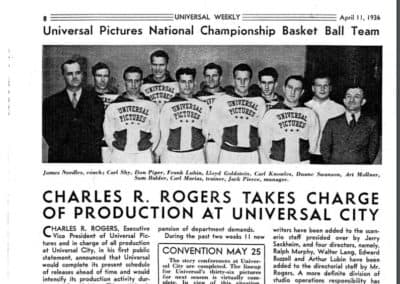
Carl Laemmle had lost his studio.
"The new administration really wasn't too keen on sending a group of employees over to Nazi Germany," Pirtle says. "So the studio pretty much said, 'OK, you guys are on your own.' ”
If they wanted to go to Germany, the players would have to pay their own way. Not only that, they’d likely lose their jobs at the studio.
For the Universal players, it was an easy choice. The only question was: how could they raise the money? A local sports writer had an idea for a fundraiser: an exhibition between the Universals and a team of college all-stars in Los Angeles. It didn’t go well.
"First of all, hardly anybody showed up for the game," Pirtle says. "I think they only made $500. And then the college all-stars beat the Universals, and so the joke was that the wrong team was going to Berlin."
Things were not looking good.
But just before it was too late, some other Hollywood big shots stepped up. They funded the team.
James Whale — director of "Frankenstein" as well as "Show Boat" — was one benefactor.
"We've got Frankenstein and Woody Woodpecker to thank, in part, for the first U.S. Olympic basketball team."
Author Andrew Maraniss
"Another was Walter Lantz, who was an animator who created Woody Woodpecker," Maraniss says. "So we've got Frankenstein and Woody Woodpecker to thank, in part, for the first U.S. Olympic basketball team."
The Universal players boarded a train for New York just in time to catch the S.S. Manhattan bound for Germany.
"They really weren't able to practice much basketball," Maraniss says. "Initially, they were supposed to practice on deck, and they lost several basketballs into the Atlantic Ocean. So there was a lot of partying, drinking, card playing going on on this boat. It sounds like it was just a pleasure cruise."
Luckily, the competition in Germany wasn’t particularly challenging. In fact, the U.S.’s first opponent — Spain — forfeited after the outbreak of the Spanish Civil War.
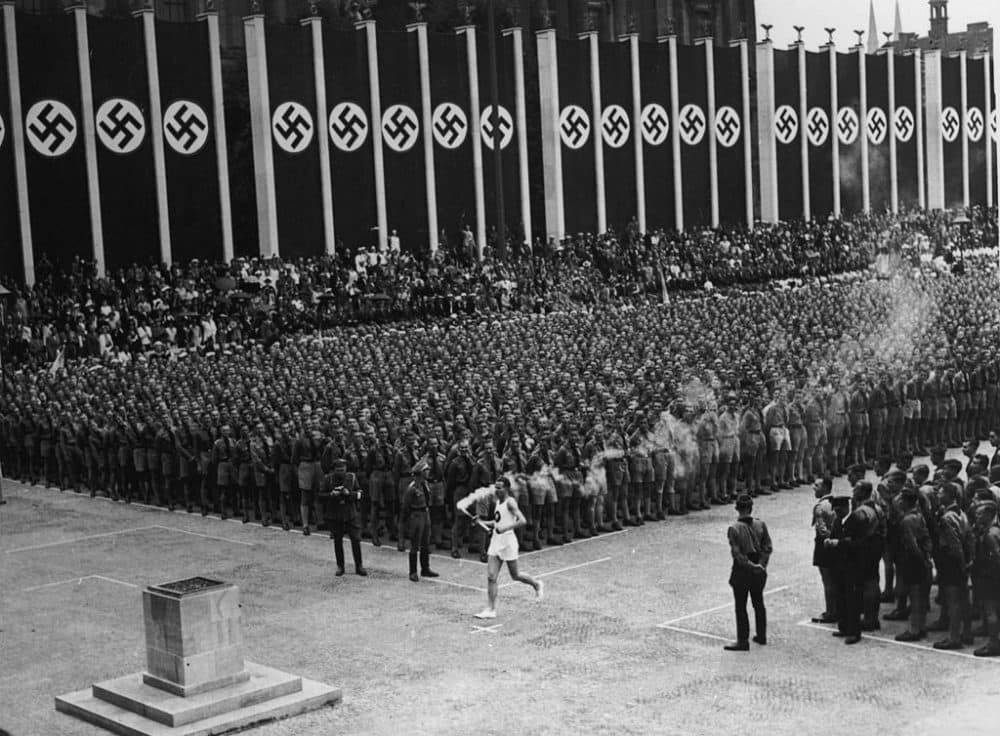
Maraniss says Estonia was supposed to be Europe’s best team, but the Americans topped them by 24 points.
The plan had been for the Universals and the Globe Refiners to remain mostly separate squads and alternate playing on behalf of Team USA. Because Universal Pictures had won the qualifying tournament, they were supposed to play first — and also last in the gold medal game.
But because of the Spanish Civil War and the cancellation of that first game, the order got thrown off, and the players from the Globe Refiners — not Universal — got to represent the U.S. against Canada for the first Olympic basketball gold medal.
(Which I'll bet was not a sentence you expected to read today.)
The U.S./Globe Refiners beat Canada, 19-8. The Globe Refiners received their gold medals at a ceremony. The Universal Pictures players got their medals in the mail back in L.A.
Not exactly a cinematic ending.
And Andrew Maraniss says after the Olympic Games both the Globe Refiners and the Universals disbanded.
"They win the gold medal and that's the last time they ever play," Maraniss says.
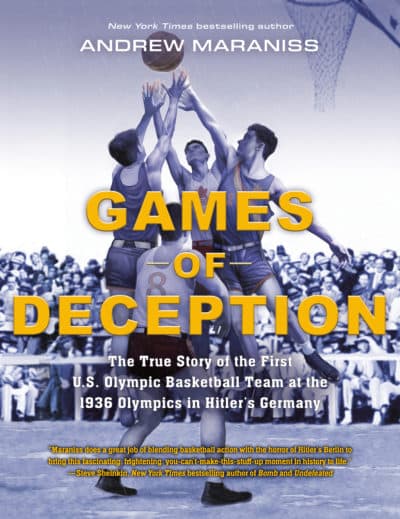
Center Frank Lubin — that’s the guy who’d dress up as Frankenstein before games — went on to work as a stagehand and play for the team at 20th Century Fox.
Sam Balter, the one Jewish player on the team, became a famous L.A. sportscaster. And especially noteworthy for fans of NPR, Balter's granddaughter also ended up in front of a microphone — it's NPR international correspondent Carrie Kahn. (Check out her 2008 piece on her grandfather here.)
Universal Pictures never formed another competitive basketball team. (The studio still turned out OK. Instead of layups and jump shots, Pirtle says they leaned on Deanna Durbin musicals and Abbott and Costello comedies.)
Pirtle also says there was a silver lining to founder Carl Laemmle’s loss of the studio.
"Carl Laemmle dedicated the last three years of his life to writing affidavits for German Jews to get out of Nazi Germany and come to America. And he wrote over 300 affidavits," he says.
"His star is right at the heart of the Hollywood Walk of Fame, and that is well-deserved," Maraniss says.
For more, check out Andrew Maraniss’s book “Games of Deception: The True Story of the First U.S. Olympic Basketball Team at the 1936 Olympics in Hitler’s Germany.”
This segment aired on February 8, 2020.
